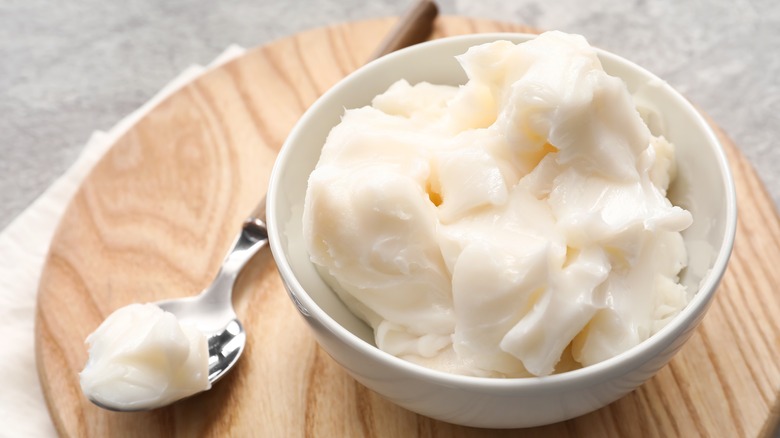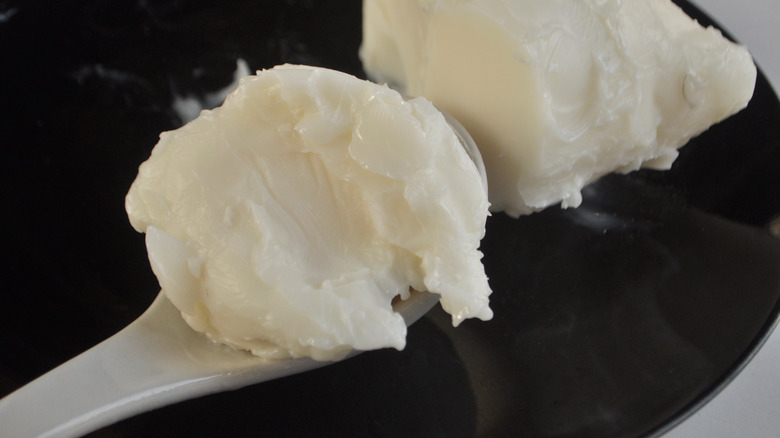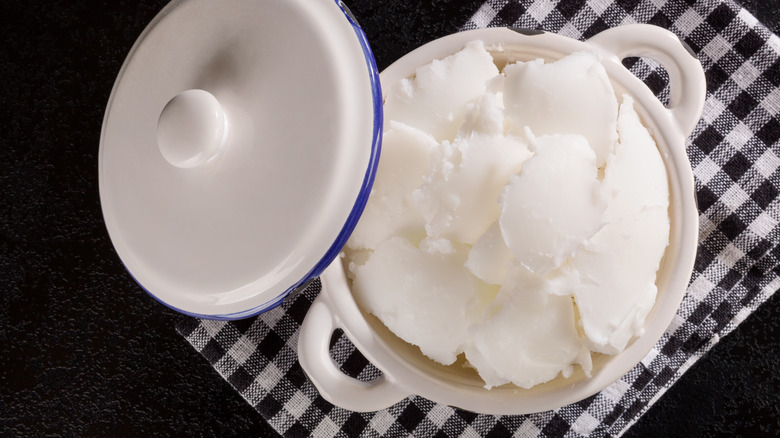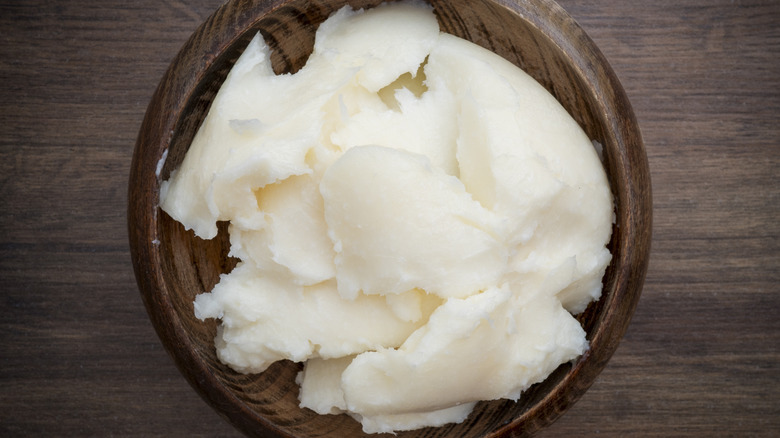Are Suet And Lard The Same Thing?
According to America's Test Kitchen, in 1928, the average U.S. consumer ate roughly 14.3 pounds of lard every year — a figure that dropped to a measly 1.5 pounds by 2009. Dan Pashman, the host of the food podcast The Sporkful notes, "The word 'lard' has become this generally derogatory term associated with fat and disgustingness," via NPR. Yet, the culinary creations of China, Poland, Italy, Thailand, Hungary, Mexico, and Central and South America are no strangers to the wonderous uses of lard. "It seems funny," says Ron Silver, owner of Brooklyn-based restaurant Bubby's, "but for thousands of years this was the thing that people cooked with." Bubby's even hosted a one-night-only "Lard Exoneration Dinner" to absolve lard in the eyes of diners.
Pretty much any time you use butter, you could use lard. Home cooks have been putting lard to the test for centuries, but public opinion can be fickle, and lard gave way to vegetable shortening in the early 20th century, says WebstaurantStore. Nutritionists are going back on their anti-lard campaign of yore, but believe it or not, lard contains zero trans fats and less saturated fats and cholesterol than butter. It also has the same healthy monounsaturated fats found in olive oil. So, now that we know that lard is not the awful cooking fat it was once considered to be, how do we use it? And, is it the same thing as its lesser-known counterpart, suet?
Lard is creamy and smooth
Per The Spruce Eats, lard is melted pig fat, and it is rendered, processed, or categorized as leaf lard. In rendering, lard is melted into a liquid, then strained, resolidified, and chilled before use. Processed lard follows a similar process to rendering, but instead of getting chilled, processed lard is hydrogenated to make it shelf-stable at room temperature. Leaf lard refers specifically to the fat surrounding the pig's kidneys, which is the most comparable to suet. Its creamy, spreadable texture and low melting point make it especially popular in baking.
Perhaps the most popular use of lard is in baking ultra-flaky pastries, like biscuits, pie crust, and crumb cakes, says WebstaurantStore. But, while lard is commonly used in baking, it's also a popular tool in cooking and frying. And it's a complementary ingredient considering lard's flavor can be porky and slightly sweet (as opposed to shortening, which is neutral). Cooking with lard is also an exercise in sustainability, says HuffPost: It's an easy way to reduce food waste and use every part of the pig in cooking, from snout to tail.
Suet stays firm
While lard refers to any melted pig fat, suet refers specifically to the fat surrounding a cow's kidneys, says Serious Eats. This is most comparable to the pig-derived leaf lard, which is also made exclusively from kidney-encircling fat, but there are a few other key differences between suet and lard.
Suet is solid at room temperature and has the highest melting point of any animal fat commonly used for cooking. Its density prevents it from melting into the flour until you pop it in the oven, making suet the secret to flaky baking. Since suet's smoke point is so high, explains Grassland Beef, it takes longer than lard to melt in the oven, which allows it to form larger air pockets and produce a spongy, airy mouthfeel. According to MasterClass, suet's higher melting point also gives it a less greasy bite than lard. That's why it's commonly used in traditional British pastries like meat pies and steamed puddings; it's also a popular ingredient in Scotch haggis and dumplings.
How to know which one to use
For two comparable yet different ingredients, deciding which would better suit your recipe can be challenging. But it all comes down to two things: texture and flavor.
Unlike lard's creamy, spreadable texture, suet is firm and crumbly, says MasterClass. That means lard might make a better fit for recipes where you're looking for a warm-butter substitute, like sauteing vegetables or glazing a cut of meat. On the flip side, suet's solid texture and high melting point might make it a better cold-butter substitute, like folding it into biscuit or pie crust dough.
Flavor is another key factor in deciding when to use lard or suet. Serious Eats notes that suet has a clean, mild flavor compared to lard's semi-sweet taste. Depending on your recipe, this could be either a benefit or a drawback. Suet offers a blank canvas if you don't want to introduce new tastes to your dish. But, if you're looking for a porky, savory, slightly-sweet pop, suet is admittedly bland and lacks lard's trademark flavor.



